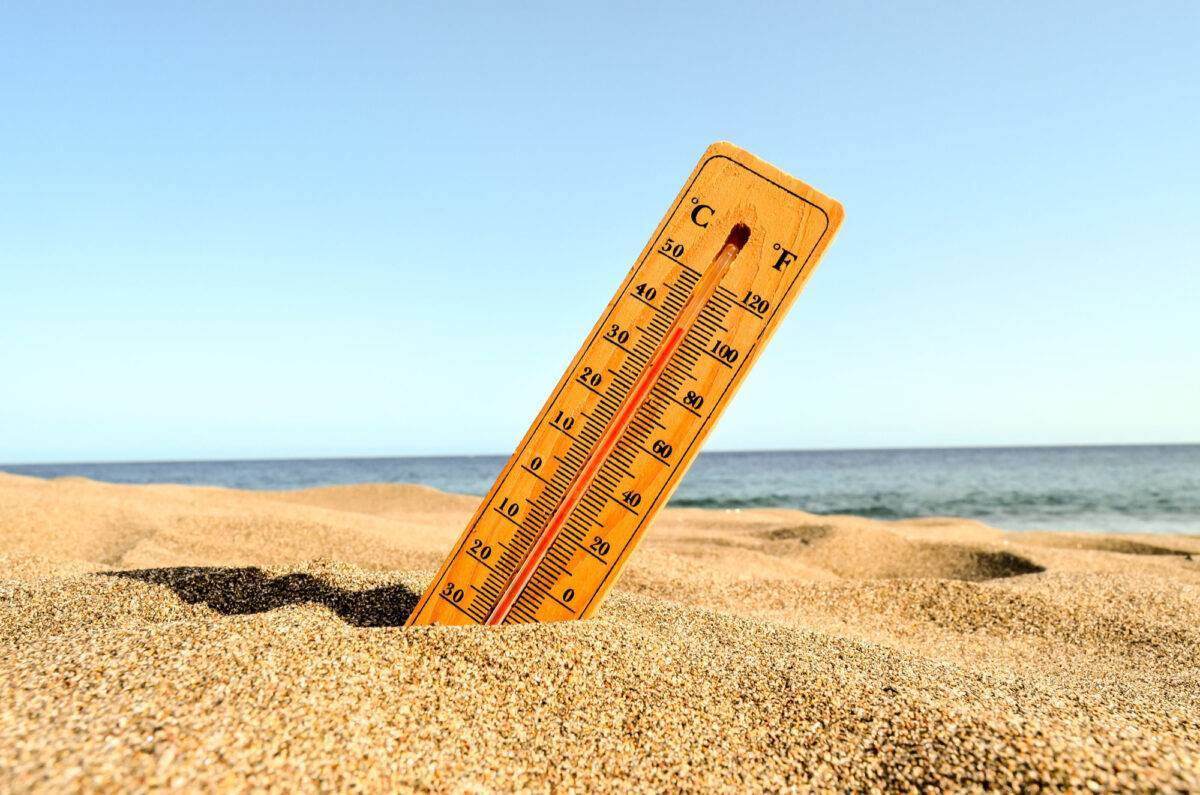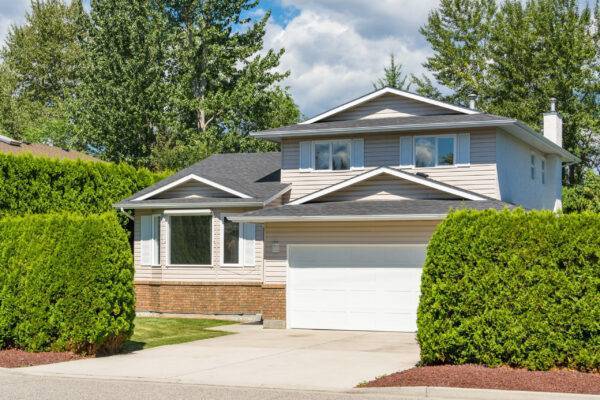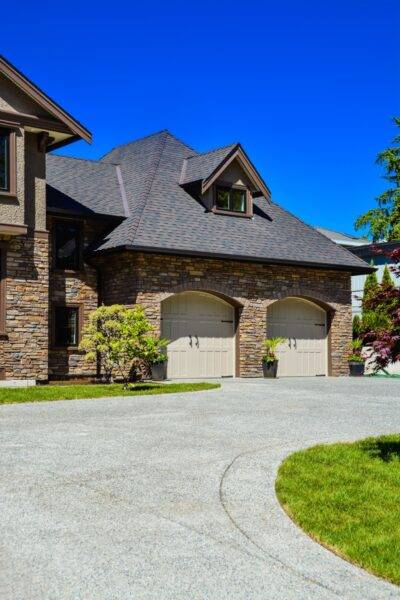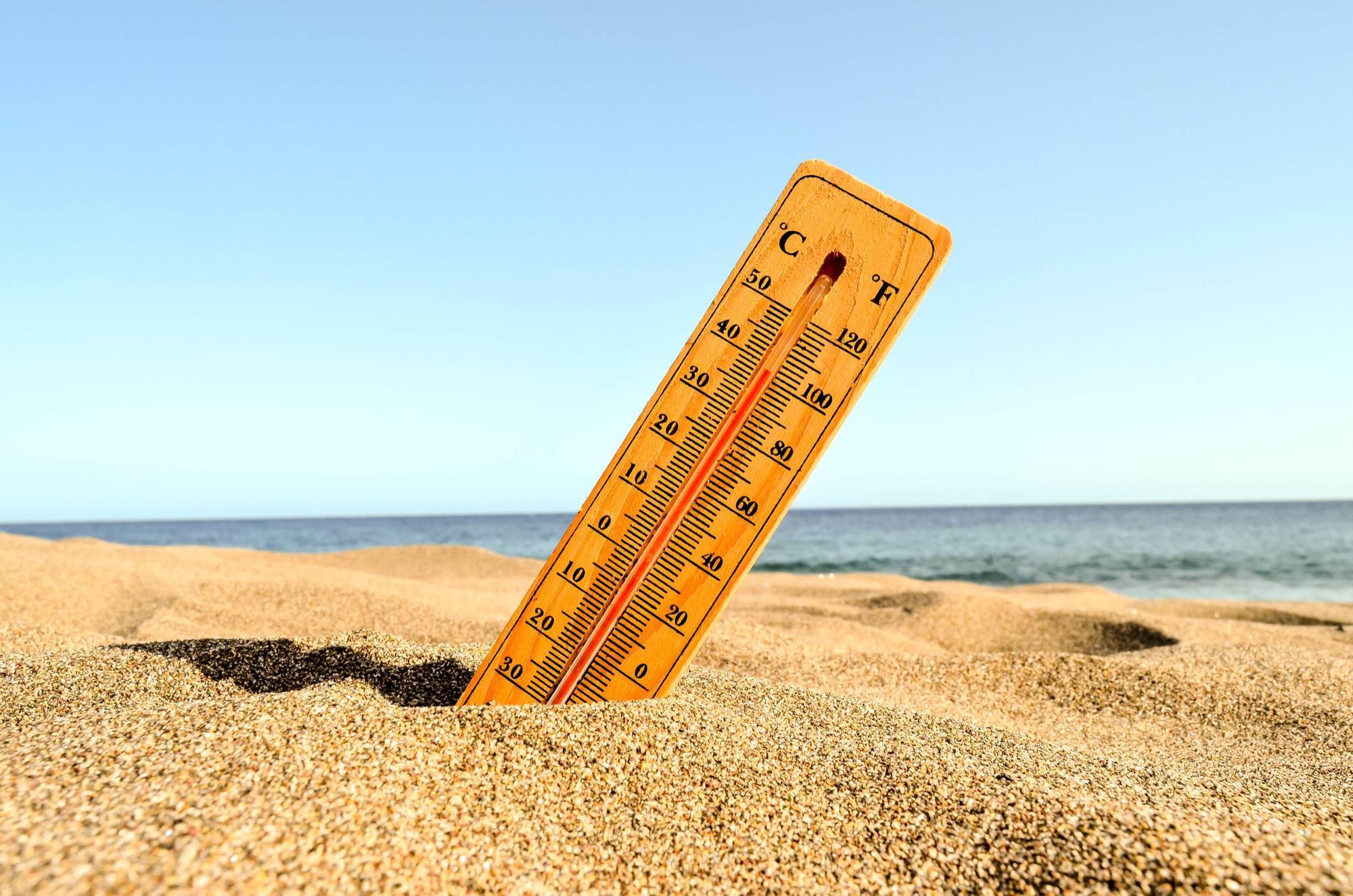
Concrete is one of the strongest, most durable, and most popular materials for driveways around the world. It has enough strength to hold boats and RVs for years, can be shaped, colored, and designed any way you want, and is relatively affordable.
However, concrete is not perfect. Like every other driveway material, it is vulnerable to extreme heat and cold. This blog will focus on why and how concrete can get damaged in hot weather and what you can do about it.
Why Does Concrete Get Damaged From Hot Weather?

The high temperatures associated with hot weather can also damage concrete driveways. Concrete is a porous material, which means it has tiny holes that water and other materials can invade and cause problems, especially in hot weather. These microscopic pores cause the most issues in extreme weather for owners of concrete driveways.
However, the porous nature of concrete is both a blessing and a curse, as it provides its ultra-popular compressive strength that can support massive loads without breaking.
Extreme Cold and Extreme Heat Can Cause Problems
Just as the cold can shrink the concrete and make it more susceptible to cracks, the summer heat can cause the water and material in the pores of the concrete to expand. This expansion can cause the surface of the concrete to crack, and in extreme cases, the entire driveway can be destroyed.
To avoid possible cracks or significant repairs, you must ensure that the concrete has had enough time to cure before exposing it to high temperatures — at least 30 days. You also need to keep an eye on any temperature fluctuations, as these can also cause damage to concrete driveways.
How Can Hot Weather Damage Your Concrete Driveway?

Here are some ways the hot weather can affect and damage your concrete driveway.
Quicker Moisture Loss
One of the ways that hot weather can damage your concrete driveway is by causing rapid moisture loss. When the sun beats down on the driveway and the yard, it can quickly sap the moisture from the ground. This can cause the soil to shrink and the concrete in your driveway to sink or crack.
These cracks will get bigger if left untreated, and the entire slab could sink considerably. So, if you notice any signs of damage, be sure to take action and get it repaired as soon as possible.
Color Fade
Concrete driveways are susceptible to fading in hot weather. The intense UV rays of the sun can fade the color of your driveway, especially if it is a lighter color. If the sun is not hitting your whole driveway, you will see patches of color that are more faded than others.
Concrete can also bake in other stains or spots, often from grass trimmings, fallen leaves, oil and grease stains from your car, or berries that drop from your trees. Keep these materials off your driveway if you want to maintain its appearance.
Sealant Damage
The sealant used to protect your concrete driveway can damage and weaken the concrete’s strength. Certain sealants, like those that are epoxy-based, will break down under heat and UV rays. This will cause them to produce holes or pull away from the concrete. More moisture can get into the damaged area if these sealants are damaged.
Radiation Damage
The sun emits a lot of radiation, especially in the hot summer months when the sun is closer to Earth. The sun’s radiation can also cause your concrete driveway to heat up and crack. The combination of the heat and the sun’s radiation can cause the concrete to expand and contract, eventually leading to cracks in your driveway.
These are the main ways that sun and heat can damage your driveway. Next, we’ll tell you how to prevent your driveway from being damaged by the heat.
What Can You Do To Prevent Heat Damage?
With anything else that you want to last a long time, you need to take care of it. The same goes for your driveway during hot weather. You need to perform specific tasks to avoid any damage caused by the sun and heat.
- Keep the driveway clean: This will help keep the surface cooler and avoid any stains or damage caused by debris or spilled chemicals.
- Seal and reseal it: You should also reseal your driveway every other year or when needed. Ensuring your driveway is adequately sealed will help protect the surface from the sun and heat and will also help keep it looking great for many years to come.
- Fix damages as soon as you notice them: If you see any damage or issues with your driveway, address them as quickly as possible. This will help avoid further damage and keep your driveway in excellent condition.
The best way to keep your driveway looking great, staying damage-free, and lasting as long as possible is to apply a bit of preventative maintenance.
How Can Hot Weather Cause Concrete to Crack?
Hot weather can be detrimental to concrete structures, leading to cracks. The intense heat causes the moisture in the concrete to evaporate rapidly, leading to shrinkage and cracking. To prevent this, using concrete crack solutions such as incorporating expansion joints, reducing the water-cement ratio, or adding admixtures can help combat the damaging effects of hot weather on concrete.
Final Thoughts

While the changing of the seasons can be problematic for concrete driveways, there are some ways to help minimize the damage. One way is to ensure that the concrete is sealed properly, which will help protect it from moisture and seal any cracks that may have formed.
Additionally, it is essential to keep a close eye on any changes in the driveway’s condition and address them as soon as possible. Taking these precautions can help ensure that your concrete driveway lasts for many years, despite the changing weather conditions.
Tulsa Concrete Contractor has been pouring and repairing concrete driveways in the Tulsa, Oklahoma area for years. We know when and how to pour your concrete driveway so that the heat does as little damage as possible. Click the link below to get a free quote from Tulsa Concrete Contractor for your next driveway project in the Tulsa, Oklahoma area.

